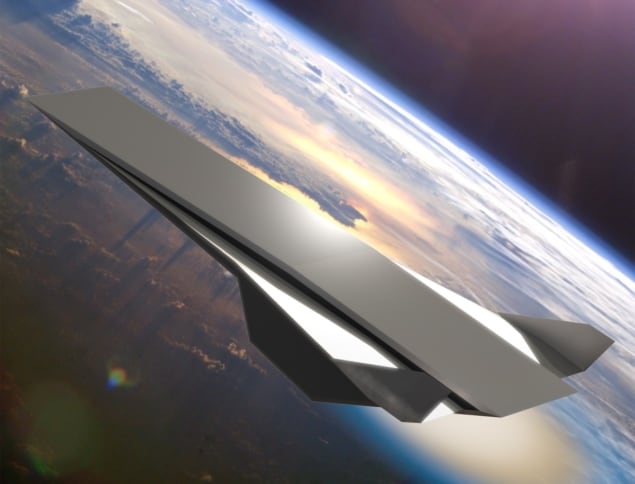
Scientists in the US have produced a detonation that is fixed in space for the first time. This standing wave detonation was created in a prototype engine and the researchers say that such a system could one day power aircraft at up to 17 times the speed of sound.
Most fires are deflagrations. This form of combustion creates a subsonic reaction wave and powers much of our transport technology. But you can get a much more powerful and efficient release of energy from a detonation. This type of combustion produces supersonic shock waves driven by energy release from closely coupled chemical reactions. These waves travel at many times the speed of sound, with those produced by igniting a hydrogen–air fuel mix, for example, often reaching speeds of Mach 5.
This intense energy release is highly unstable and difficult to control. If harnessed, however, it could be channelled to achieve hypersonic flight for future interplanetary travel and ultrahigh-speed intercontinental travel on Earth. Estimates suggest that an engine operating with a Mach 5 flow path, such as that produced by a hydrogen–air fuel mix, could enable vehicle speeds of Mach 6 to 17. That would allow you to fly from New York to London in just half-an-hour.
There are three main detonation engine concepts. Pulse detonation engines create repeated explosions, while in a rotating detonation engine, detonations continuously travel around a circular channel with the shockwave from each setting off the next. Both of these have been previously demonstrated. Now, researchers at the University of Central Florida and the US Naval Research Laboratory say they have demonstrated the third concept: a standing or oblique detonation wave engine. They report their results in the Proceedings of the National Academy of Sciences.
The idea behind an oblique detonation wave engine is to produce a continuous detonation that is fixed in space, so that the resulting shockwave is stable and remains in the same position. “We want to feed [the detonation] with the right propellant mixture, at the right speed and freeze it in space,” Kareem Ahmed tells Physics World.
To create such a detonation, Ahmed and his colleagues developed a prototype engine named HyperReact (high-enthalpy hypersonic reacting facility). This device is divided into three sections. In the first, the mixing chamber, a jet of hydrogen and air is ignited. This creates hot high-pressured air that flows into the next section, the converging–diverging (CD) nozzle, which has an axisymmetric square cross-section along its entire length. As the air enters the CD nozzle a jet of ultrahigh-purity hydrogen is added. The shape of the CD nozzle is designed to then accelerate the mixture to speeds of around Mach 4.5 as it enters the test section. In this final chamber there is a 30-degree turning angle ramp.
The team found that by manipulating the fuel mix, temperature and air flow through the chambers they were able to produce an oblique shock on the ramp that created a detonation that was stabilized on the ramp. This standing wave detonation lasted for the duration of active fuelling, which was around three seconds. This is significantly longer than a normal detonation and demonstrates proof-of-concept, the researchers say.

Air-breathing rocket engines: the future of space flight
Ahmed explains that the main benefit of detonation based propulsion would be much higher efficiency than deflagration-based systems. “Achieving hypersonic speeds is critical because we don’t currently have a propulsion system that can do that,” he adds. “The only propulsion system that can give you hypersonic speeds is a rocket motor. Now rocket motors are not efficient. We know that because otherwise we’d all be flying to outer space. They are very expensive.”
Ahmed tells Physics World that now the researchers have proved that an oblique detonation wave engine is possible they want to explore the different conditions, such as fuel type and speed of the fuel flow, under which the detonation can remain stable. This is necessary to achieve the levels of control that would be required to realise hypersonic flight.



